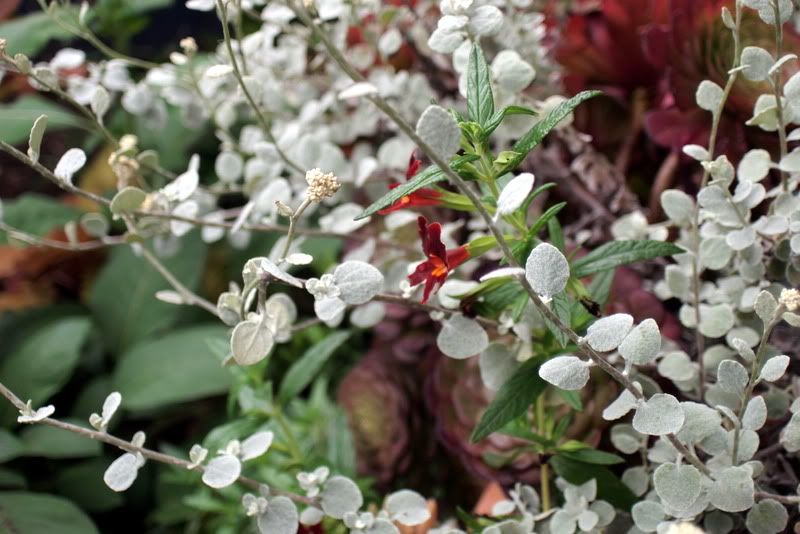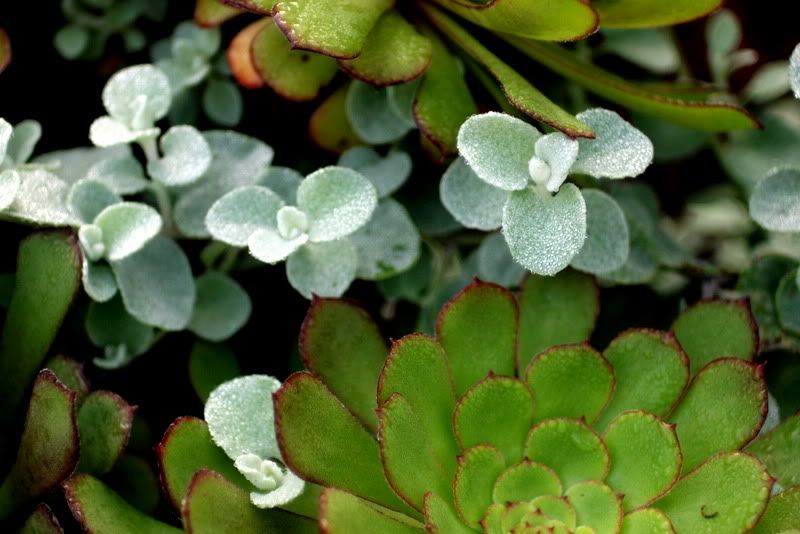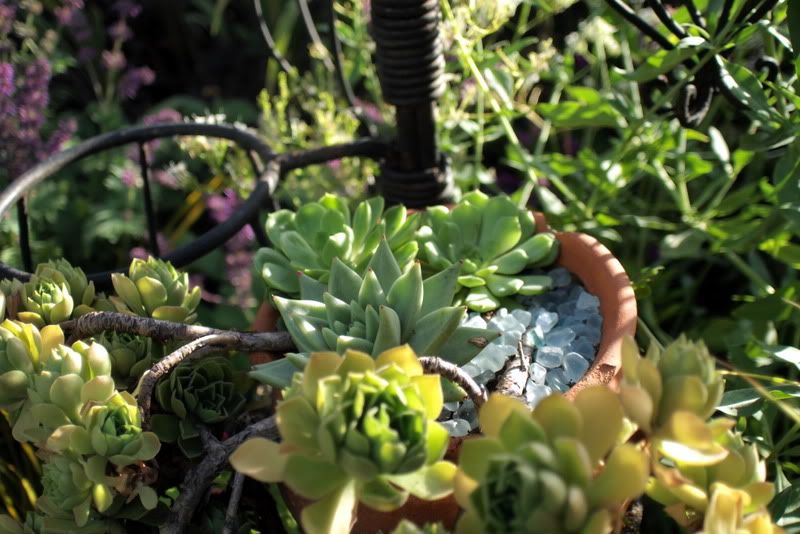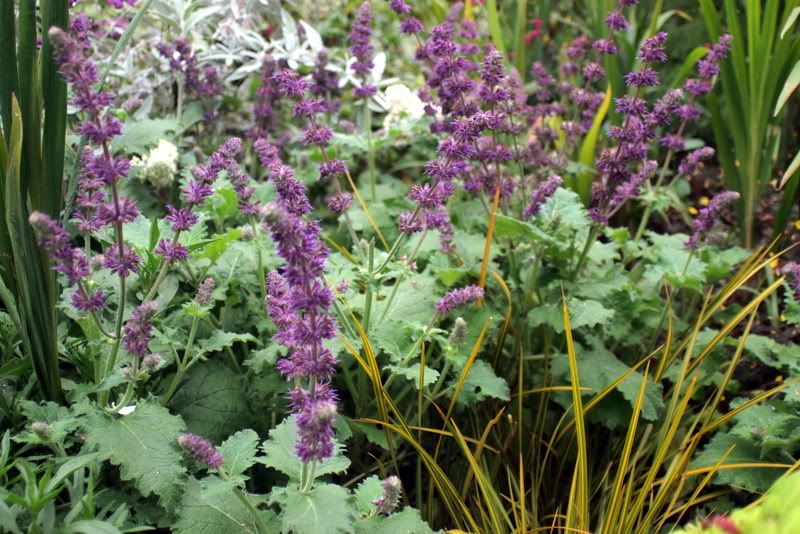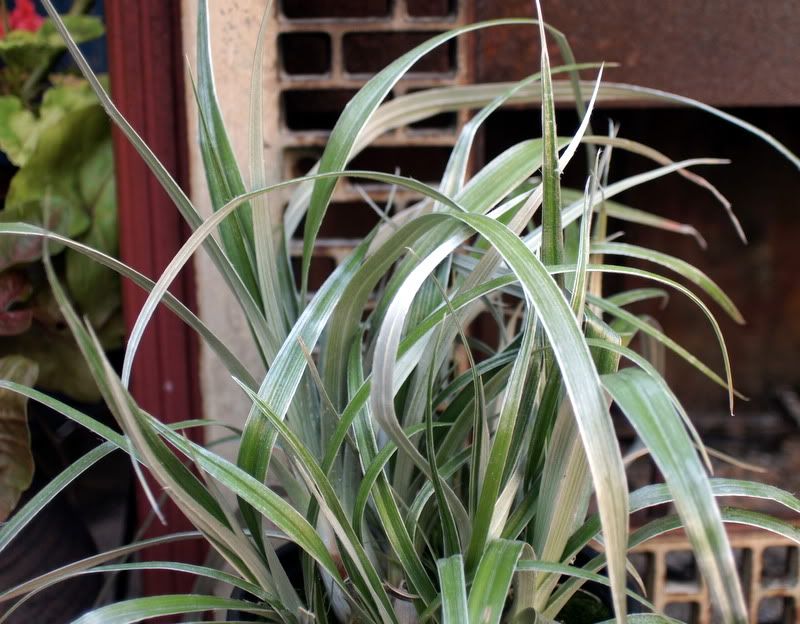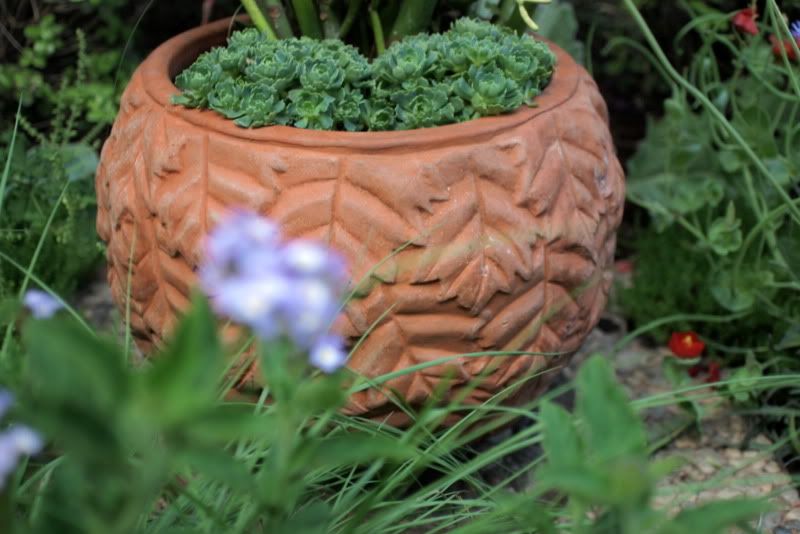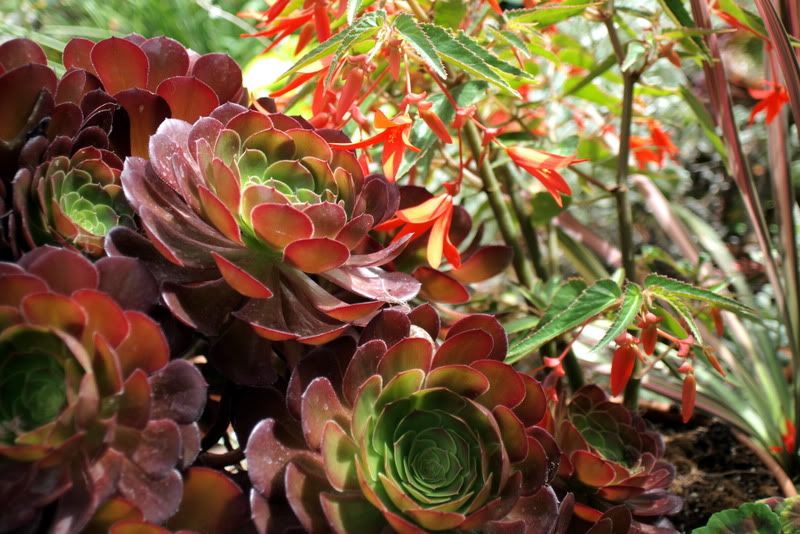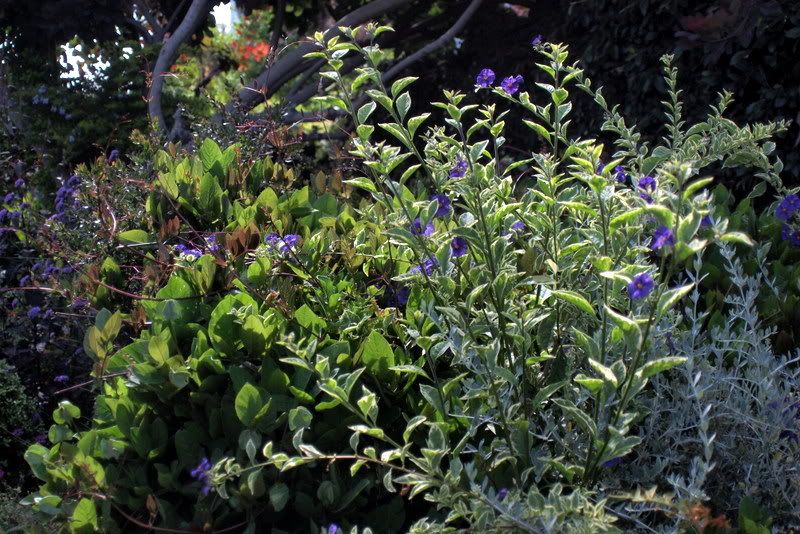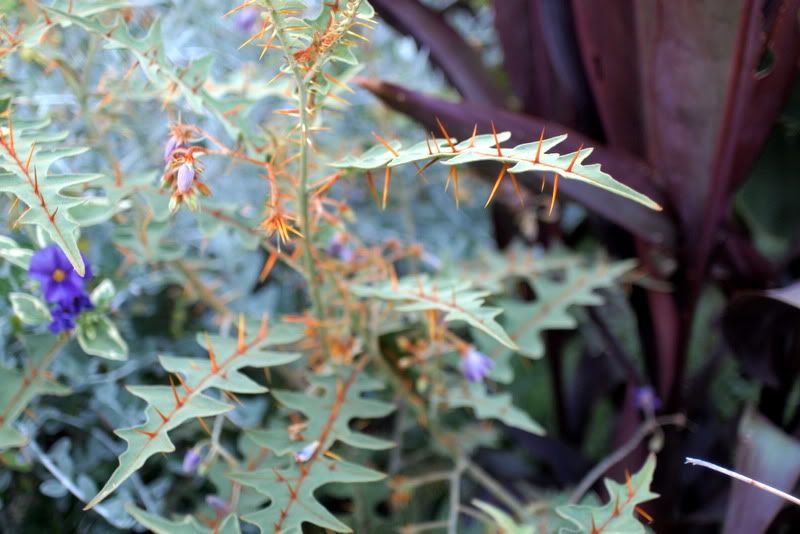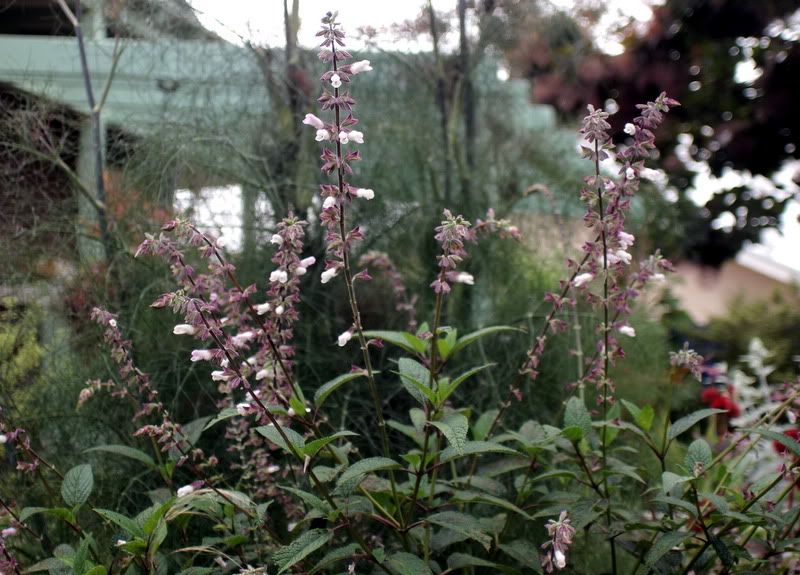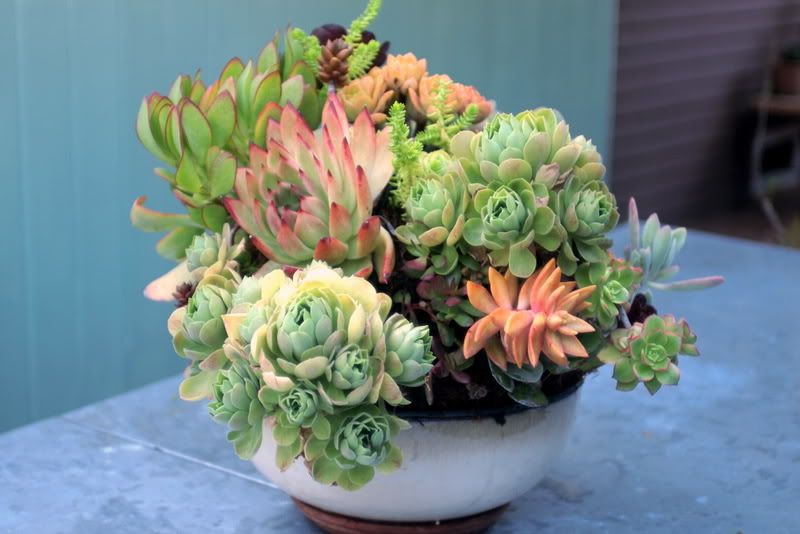Driving by, I slow down to shout at David, who’s laying a recycled concrete paver/DG (decomposed granite) path in the front yard.
Don’t you love neighbors who drive by slowly and shout at you while you’re hard at work? I’ve been mystified by this shrub all year but was reluctant to knock on the door to inquire about a shrub, and prowling around the front yard without permission could possibly be misconstrued.
Me: David! Just the man I need to talk to!
David drops what he’s doing and good-naturedly saunters over. I gesture toward the massive, 8-foot shrub obscuring half his bungalow. On the other side of his front door, coyote brush, Baccharis pilularis, is performing the same vegetata obscura routine. David is going for California natives in a big way. In his small front yard, I also detect a young Coast Live Oak. It’s clear that here lives another sufferer of the small garden syndrome.
Me: Is that a dendromecon?
David: It’s a Catalina Tree Poppy.
Me: Oh.
David: Got it from Tree of Life nursery.
Me: But, David, it’s been in bloom all winter!
David: Yeah, I know. Never stops blooming. Bill and Tom grew it and said it blooms all year.
Me: So yours isn’t a freak?
David: (slightly offended) No, mine’s not a freak!
We both stare at the tree poppy in full bloom. I’ve never heard the common name Catalina Tree Poppy used before. Bush Poppy or the Island Bush Poppy, yes, but never Catalina Tree Poppy. I know it’s got to be a dendromecon but don’t want to push the point and brand myself a geek who insists on botanical Latin. And, really, what the heck else could it be? Citrus yellow poppy flowers spangled against bluey-green leaves.
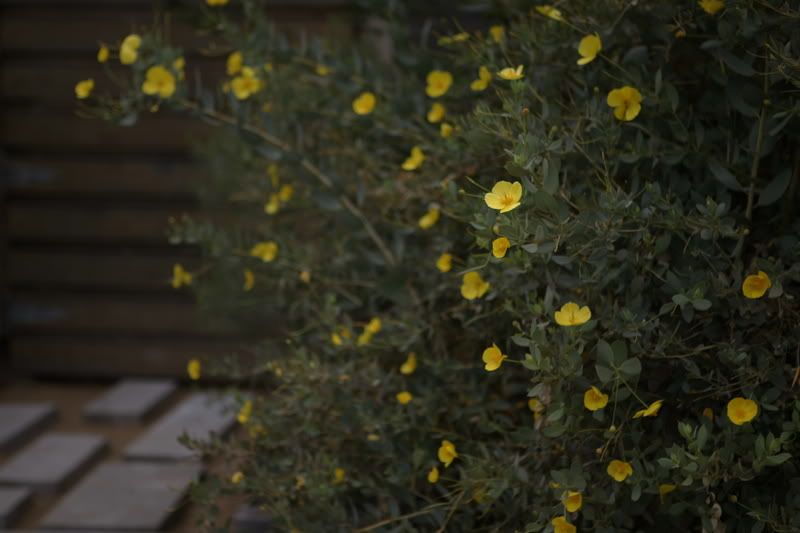
But it’s so very, very large. And who knew dendromecons were such long bloomers?
By this time, I’ve been parked in the middle of the street at least five minutes, cars are coming up in the rear-view, and it’s time to get moving.
Later I walk over for closer inspection. Definitely a dendromecon.
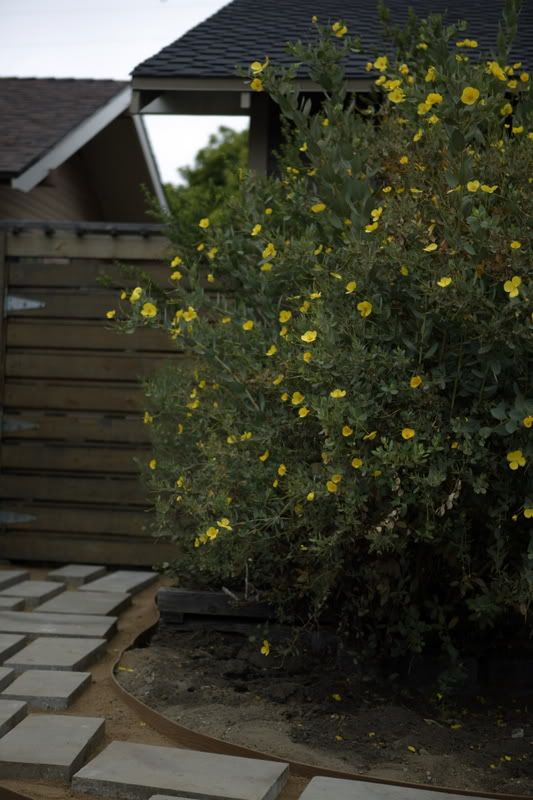
A little Internet research reveals the Catalina and Channel Islands dendromecon is D. harfordii and can reach tree-like proportions. The mainland dendromecon, D. rigida, is smaller, the leaves are slightly serrated, and it’s reputed to be a tougher if less attractive shrub. Yet the Las Pilitas Native Plant Nursery says “The plants are nearly identical if treated alike. D. rigida is a little more hardy and D. harfordii is a little easier to do from cuttings. Plants planted together in the same climate are so similar they would not key out with the taxonomy books.” Both are extremely drought tolerant, as David attested for his tree poppy. The evergreen dendromecons range along the coast from Sonoma County north of San Francisco down to to Baja California.
Length of bloom is a subjective concept, dependent on the length of one’s growing season, i.e., long blooming in zone 10 versus zone 4 or 5, where the growing season is a few months. But by my own eyes, driving up and down my street, day in/day out, I can testify this shrub is literally in bloom every single day, 12 months a year. And not just a few token blooms but a lavish amount of bloom. It’s been in the ground three years, and I’m fairly certain it’s just this past year that the ever-blooming ability has been confounding me as I drive past. (Kind of a Groundhog Day plant.) Traditional references like Sunset Western Garden Book list these papaveracea members as blooming spring through summer, but the native plant nurseries seem to be in on the secret of their year-round bloom.
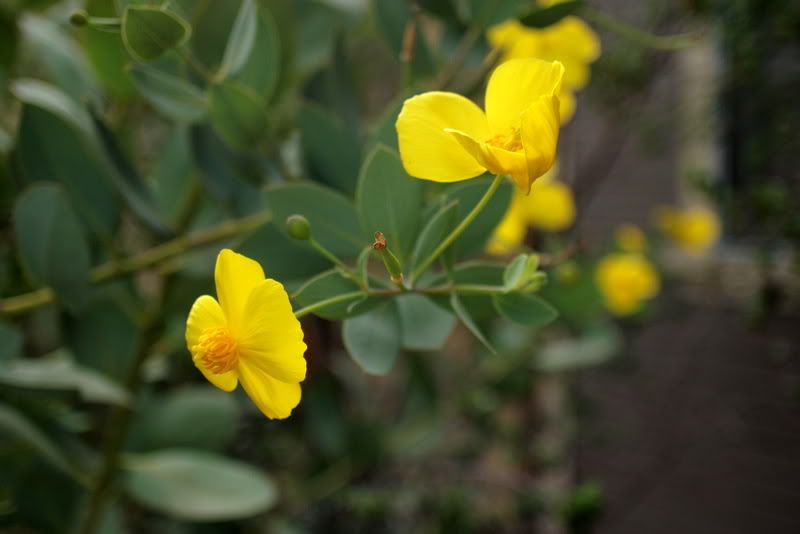
David seems immune to this astonishing fact. To him, it’s just a big shrub with nice yellow poppy flowers that wants to grow too big. Cutting it back apparently increases bloom, so he seems to be doing everything right with this shrub. He was more excited about a small manzanita he’s just planted that seems to be tentatively choosing to live in his garden. Two previous manzanitas opted out.
Me: Maybe the tree poppy will stop blooming in August, kind of poop out in the heat?
David: Hasn’t so far.
One more photo of David and Crissy’s house. I told David I really admired his postmodern fence, a whip-smart allusion to a fence, propped up like the fake saloons on cowboy movie sets, and how it added heft and structure to the natives without making the yard seem even smaller. David listened politely to my compliments, but I noticed there were no head nods of recognition in response to my description, and he may have even looked a bit perplexed. So I shut up to let him speak.
David: It’s a snow fence. It keeps the skateboarders off the plants.
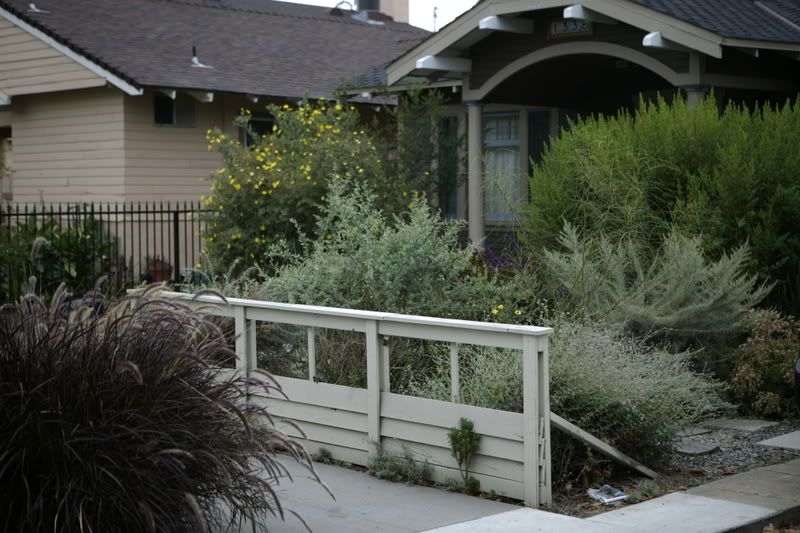
Never heard the term “snow fence” before either. David was full of surprises.

